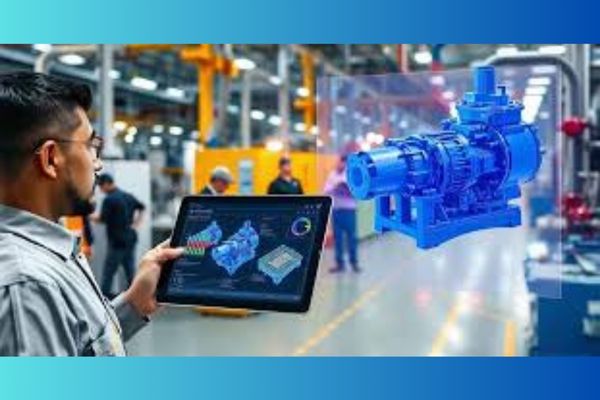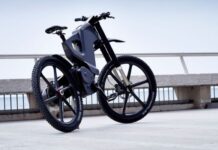The global digital twin market size was evaluated at USD 19.80 billion in 2024 and is expected to hit around USD 471.11 billion by 2034, growing at a CAGR of 37.29% from 2025 to 2034.
The global market for digital twin solutions is growing at an extraordinary pace, driven by advances in cloud computing, edge analytics, artificial intelligence, and Internet of Things (IoT) technologies. This surge reflects not only technological momentum but also the strategic imperative among enterprises to optimize their value chains, minimize downtime, and innovate more efficiently in a volatile global economy.
A New Era Begins with Digital Twins
Digital twin technology has rapidly evolved from a niche concept to a cornerstone of modern industry. As global enterprises embrace digitalization to navigate an increasingly complex landscape, digital twins are enabling a new era of operational excellence, intelligent decision-making, and system resilience. Far more than just a 3D model, a digital twin serves as a dynamic, real-time mirror of a physical entity, infused with contextual data, artificial intelligence, and simulation capabilities. This convergence of the physical and digital realms is revolutionizing how businesses design, operate, and maintain assets, processes, and systems.
“The global artificial intelligence (AI) market size was USD 638.23 billion in 2024, calculated at USD 638.23 billion in 2025 and is expected to reach around USD 3,680.47 billion by 2034, expanding at a CAGR of 19.20% from 2025 to 2034”
Digital Twins: Living Mirrors of Reality
At its essence, a digital twin replicates the structure and behavior of a real-world object or process, evolving alongside it through continuous input from sensors, devices, and software platforms. Unlike traditional models that are static and limited in scope, digital twins adapt in real time, reflecting the latest operating conditions, environmental variables, and user interactions. This makes them indispensable tools for predictive analytics, performance optimization, and scenario testing across a wide range of applications.
From Shop Floors to Surgery Rooms
Digital twins are finding early and enthusiastic adoption in manufacturing, where they are used to simulate production lines, monitor machine health, and optimize supply chain logistics. By embedding sensors in machinery and feeding operational data into virtual models, manufacturers can detect faults before they occur, reduce energy consumption, and forecast maintenance needs with high accuracy.
In the automotive and aerospace sectors, digital twins have become essential for designing complex components, validating system behavior under various conditions, and accelerating time-to-market. These industries rely heavily on simulations to avoid physical prototyping, reducing costs while enhancing innovation.
In the healthcare sector, digital twins are beginning to revolutionize patient care and biomedical research. Hospitals are deploying patient-specific digital twins to monitor chronic diseases, simulate treatment outcomes, and personalize therapies. Researchers are also exploring the use of digital twins for modeling human organs, enabling pre-surgical planning and drug testing in a risk-free virtual environment.
The energy and utilities sector is also capitalizing on digital twins to manage infrastructure at scale. Power plants, oil rigs, and renewable energy installations are being equipped with virtual replicas that track performance metrics, environmental data, and energy flow. These models support risk mitigation, incident response, and sustainability goals, making it easier to balance supply and demand, predict failures, and ensure regulatory compliance.
Digital Twin Market Top Companies
- General Electric
- Microsoft Corporation
- Hitachi Ltd
- Dassault Systems SE
- Autodesk Inc.
- SAP SE
- Siemens AG
- ANSYS Inc
- PTC Inc
- IBM Corporation
- ABB
- Hexagon AB
- Oracle Corporation
- Rockwell Automation Inc
The Digital Fabric Behind Every Twin
Creating a digital twin involves a complex interplay of technologies. The process begins with data acquisition, typically through IoT-enabled sensors that capture temperature, vibration, motion, and other parameters. This data is transmitted to cloud platforms where machine learning algorithms and analytics engines process the inputs, updating the virtual model in real time.
Visualization tools, including augmented reality and 3D rendering, allow engineers and managers to interact with the twin, observe anomalies, and run predictive simulations. The entire ecosystem requires robust cybersecurity protocols, given the volume and sensitivity of operational data being transferred and stored.
Barriers That Must Be Broken
Despite its promise, digital twin technology faces several challenges. The cost of implementation remains a barrier for small and mid-sized enterprises, particularly when dealing with legacy systems and fragmented data environments. Integrating a digital twin into existing workflows demands both technical expertise and cultural readiness. Organizations must also address data governance, ensuring that information flows securely and ethically across platforms. Moreover, the lack of standardized protocols can hinder interoperability between systems and limit scalability.
Where Innovation Meets Intelligence
However, the pace of innovation is helping to overcome these barriers. The advent of 5G and edge computing is enabling faster data transmission and real-time analytics at the source. Artificial intelligence is making digital twins smarter and more autonomous, capable of learning from historical data to improve their accuracy and responsiveness. Cloud-native architectures are reducing the cost and complexity of deployment, allowing companies to scale solutions incrementally. Furthermore, interoperability standards such as the Industrial Digital Twin Association (IDTA) are emerging to ensure consistency and reliability across industries.
Looking ahead, digital twins are poised to become integral to the concept of the Industrial Metaverse a hyper-connected world where physical assets and digital counterparts coexist seamlessly. Enterprises will use these immersive environments not only for operations but also for training, collaboration, and innovation.
Sustainability: The Unseen Twin Advantage
The role of digital twins in enabling sustainability cannot be overstated. By modelling carbon footprints, optimizing energy usage, and simulating green manufacturing processes, digital twins are aligning technological progress with environmental stewardship. As governments and organizations prioritize climate goals, these technologies are becoming essential tools for measuring and reducing environmental impact.
A Future Built on Digital Reflection
In conclusion, digital twin technology represents a paradigm shift in how we design, operate, and experience the physical world. It offers a powerful toolkit for organizations striving to be more resilient, efficient, and innovative. As adoption accelerates and ecosystems mature, digital twins will move from being a competitive advantage to an operational necessity fueling the next wave of intelligent industry transformation.
Source: https://www.precedenceresearch.com/digital-twin-market

















